Ancient Cave Art
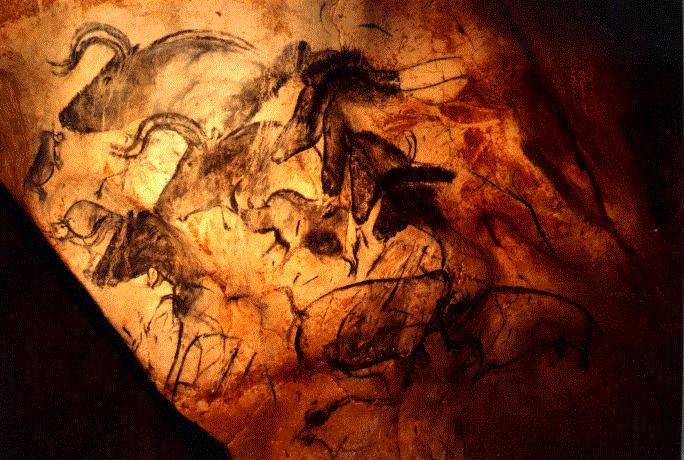
Vallon-Pont-d'Arc, France 15,000-18,000 BC
Approximately 20,000 years ago, humans in Europe lived primarily as hunters. Out of this stone age culture, the mysteries of existence were becoming important and the result was the birth of mythology. Humankind sought to understand the world about them and to manipulate that world. Some turned to magic and mythology. The greatest manifestation of those ideas are found in the remarkable cave paintings at Vallon-Pont-d'Arc and Chauvet-Pont-d'Arc in France as well as Altamira in Spain.
These paintings represent a special moment in the minds of humans. The primary objects are animals and humans appear very rarely though fertility symbols are also common. The artists who drew these, were in awe of the animals and prayed they would be successful in hunting them.
This is the art of a hunting culture.
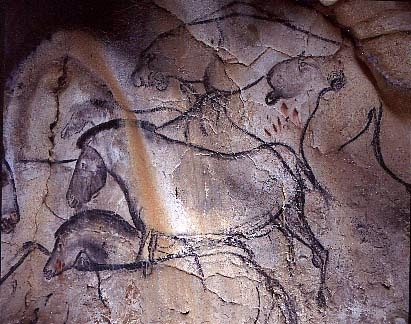
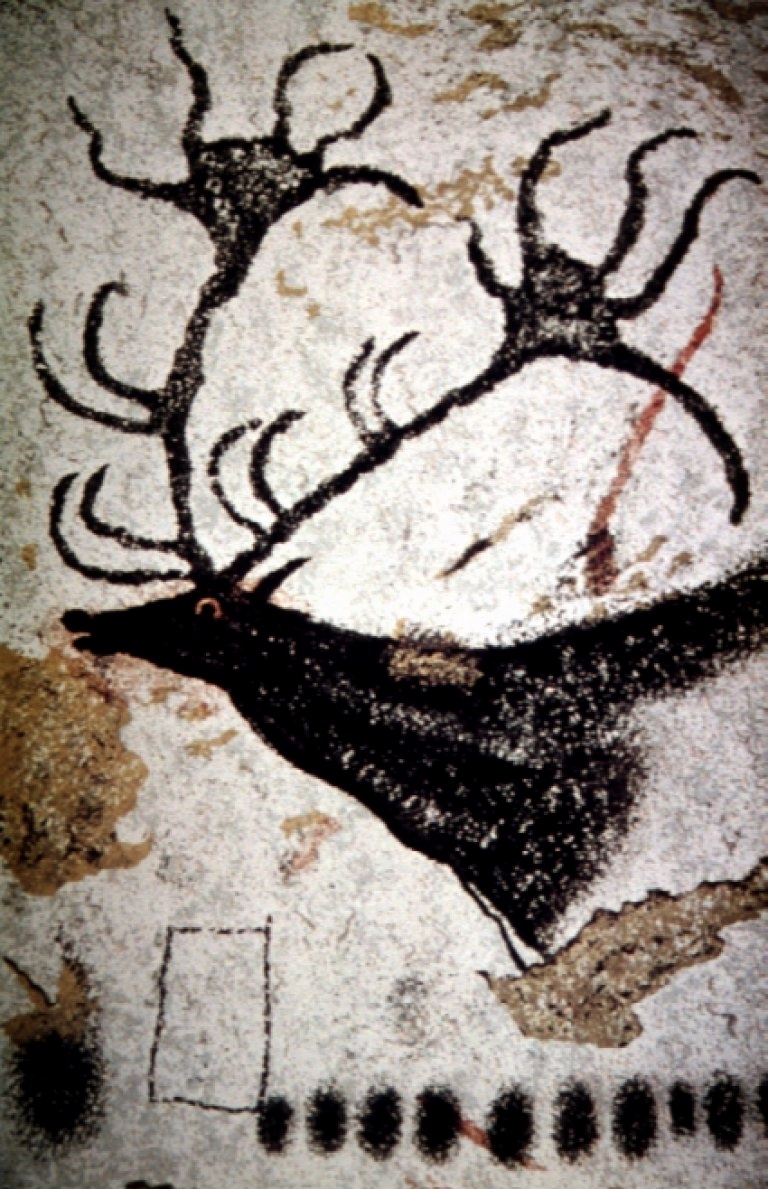
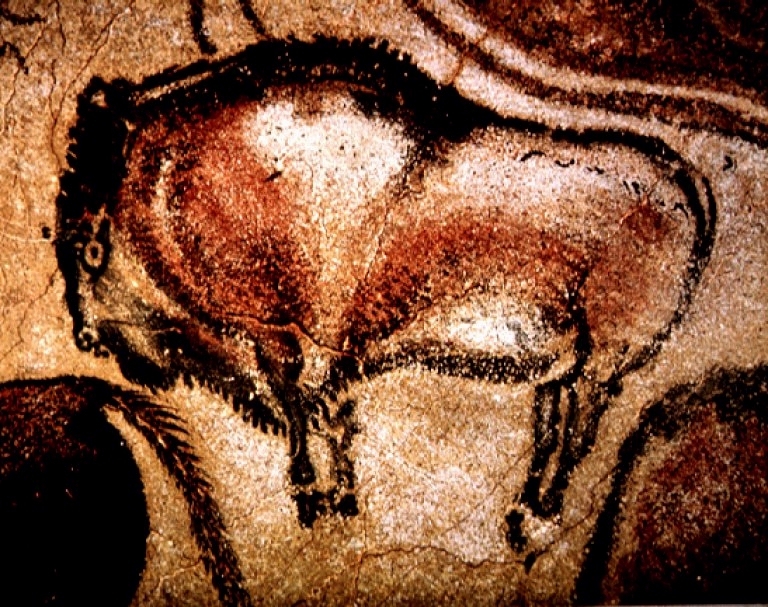
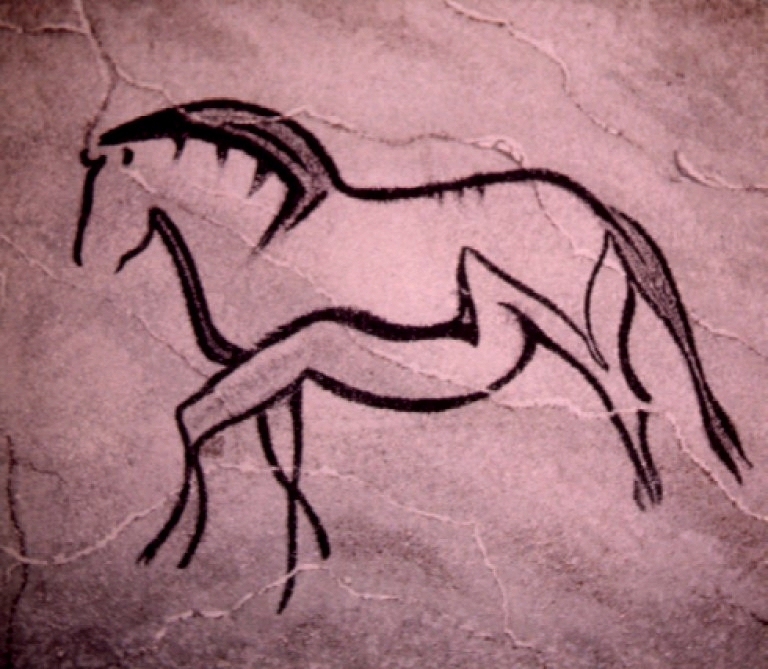
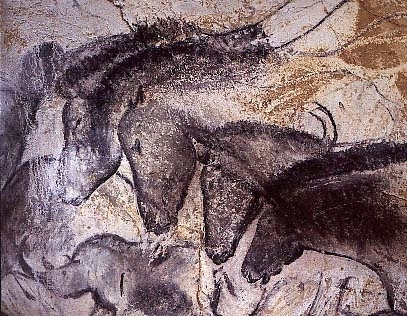
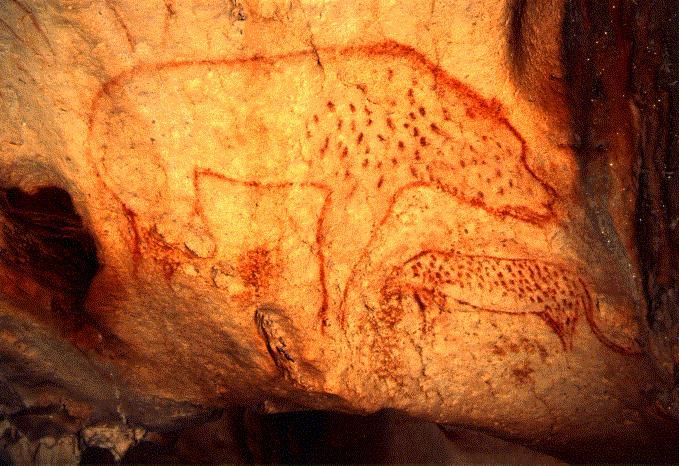
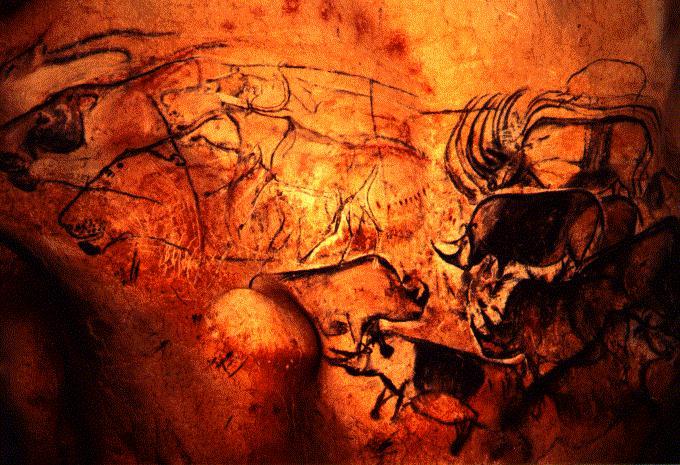

The art of the Aurignacian culture represents the first complete tradition in the history of art, moving from awkward attempts to a well-developed, mature style. The earliest examples of the small, portable art objects produced during this period are from Western Europe and consist of pebbles with very simple engravings of animal forms. Later, animal figures were carved in pieces of bone and ivory. At the same time, a tradition of true sculpture in the round grew up in eastern Europe, with vividly realistic, though simple, clay figurines of animals and highly stylized statuettes of pregnant women, the so-called Venus figures, presumably fertility figures. In the later part of the Aurignacian Period, a fusion of Eastern sculptural and Western linear traditions occurred in the West, resulting in small carvings of greatly increased naturalism; the engraved details show attempts at foreshortening and shading with crosshatched lines.
Cave art was produced almost exclusively in Western Europe, where, by the end of the Aurignacian Period, hundreds of paintings, engravings, and reliefs had been executed on the walls, the ceilings, and sometimes the floors of limestone caves. Probably the first paintings are stencilings outlined in color of actual hands held against the cave walls. The stencilings were succeeded by the development of figural painting. A characteristic feature of these early pictures, which persisted throughout the Aurignacian period, is their "twisted perspective," which shows, for example, the head of the animal in profile and its horns twisted to a front view. One of the finest examples of Aurignacian art is represented by paintings of animals, such as horses and bulls, on the walls and ceilings of the cave at Lascaux, in southwestern France. These impressive figures, painted in vivid polychrome red, yellow, brown, and black, with solid, closed outlines, show the lively naturalism, close observation of nature, and linear, one-dimensional approach that characterized mature Aurignacian art.

